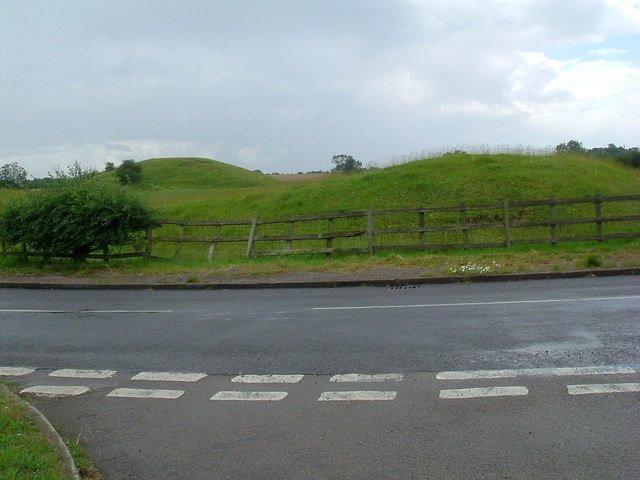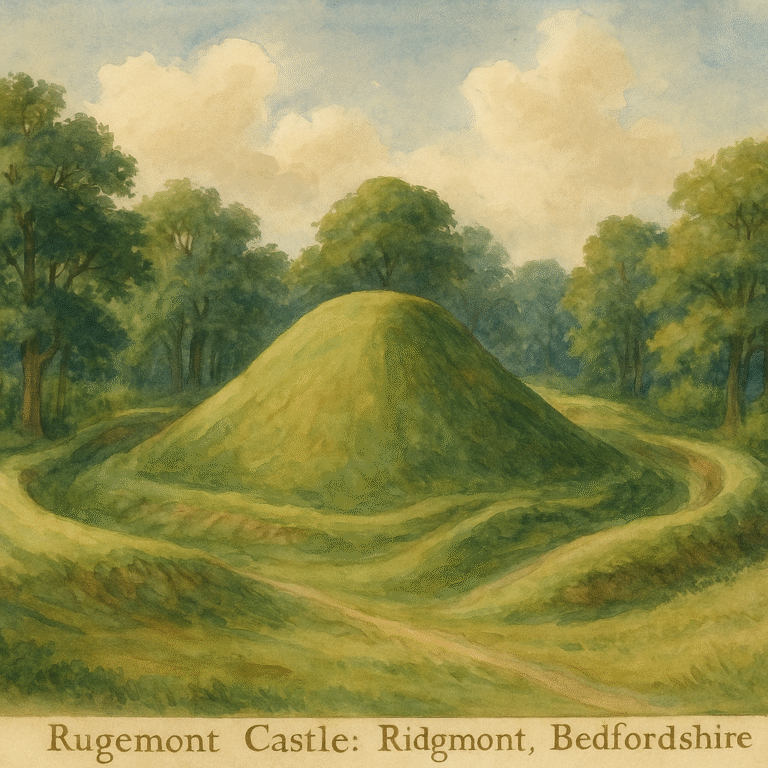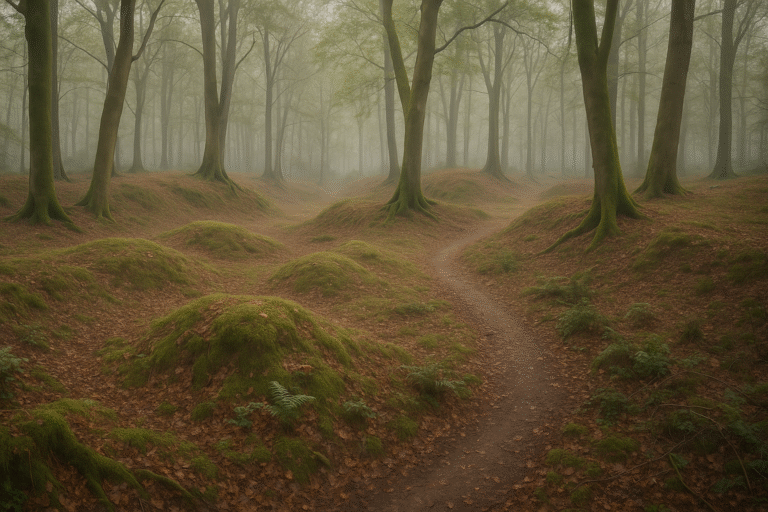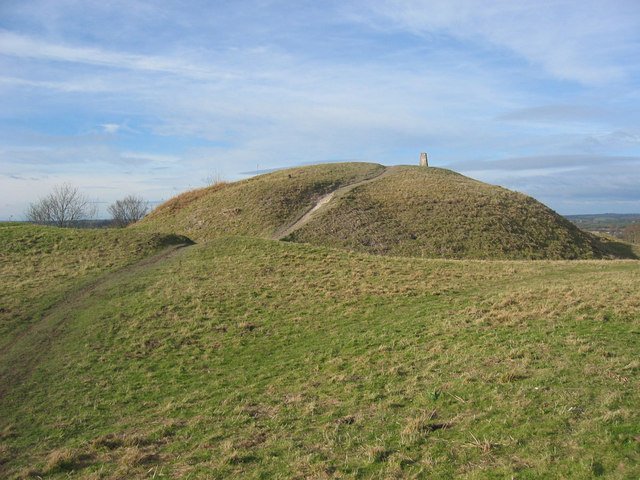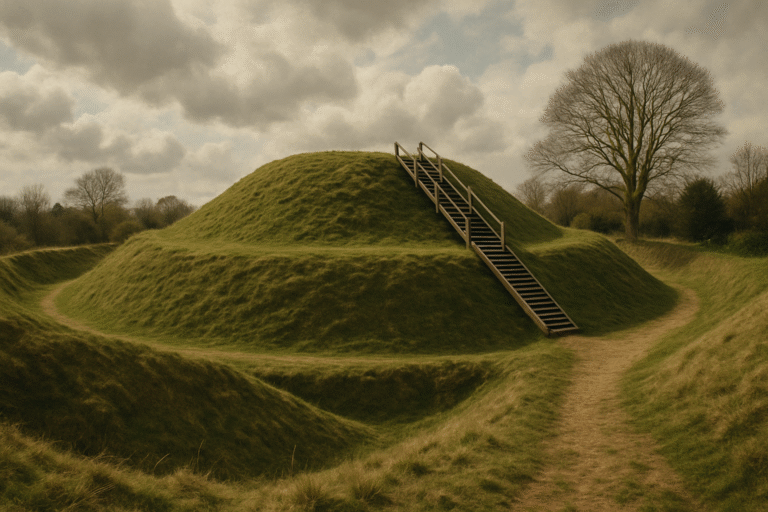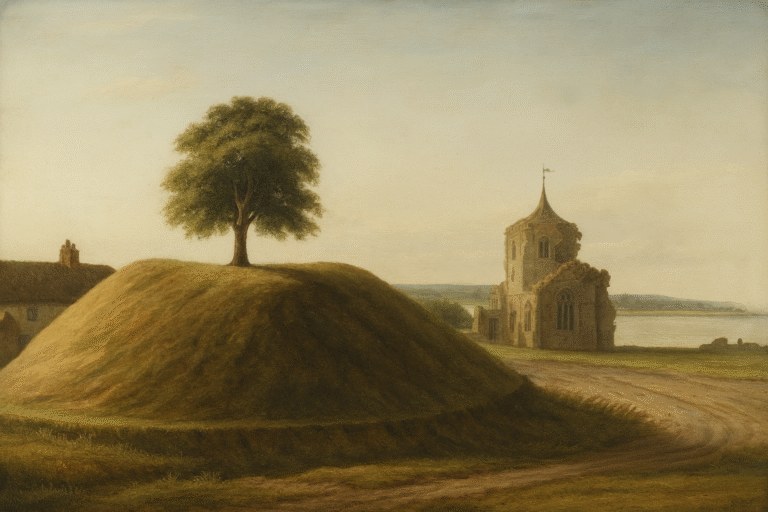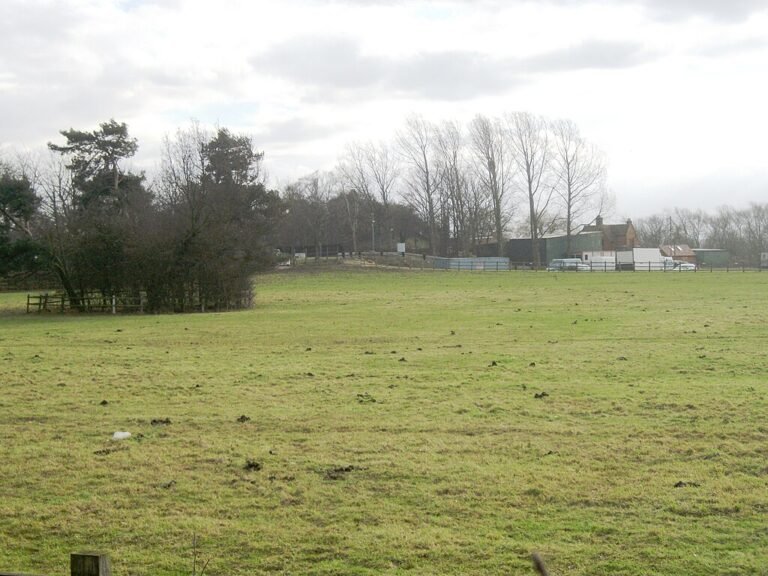Yielden Castle: A Quiet Testament of Norman Bedfordshire
Yielden Castle: Welcome to an inviting, family-friendly, and richly informative exploration of Yielden Castle, the softly rolling earthworks near Yelden (also spelt Yielden) in Bedfordshire. Nestled amidst a gentle landscape, this unassuming site is a hidden gem for those seeking a contemplative historical outing and a perfect springboard into wider British heritage tourism.
Historical Roots & Significance
A Norman Stronghold
Yielden Castle was a motte-and-bailey castle, first recorded in 1173, and served as the stronghold of the Trailly family through the 12th and 13th centuries.
Earthworks & Archaeology
Today, only grass-covered earthworks remain, but these are among the most complete in Bedfordshire. The oval motte measures approximately 55 m × 70 m at its base and rises in two distinct levels to a flat summit of about 10 m square. Explorations in 1881–82 revealed the foundations of a stone keep or tower on the motte’s summit, along with evidence of a 13th-century stone curtain wall.
Dual Baileys & Changing Roles
Two attached baileys flank the motte, one to the west (likely original), the other to the northwest (possibly a later addition). Both featured defensive ramparts and ditches of varied dimensions and significance. Notably, the site evolved over time into a more manorial landscape, evidenced by fishponds (one possibly formed by enlarging a river ditch) and the remains of a dovecote on a small island in the pond, as well as six rectangular paddocks lining the eastern side.
End of an Era
By around 1360, the site was described as decayed and derelict, and its castle function had effectively ended. Today, it remains a Scheduled Monument, recognised for its archaeological and cultural importance.
Facts & Figures at a Glance
| Feature | Details |
|---|---|
| Type | Norman motte-and-bailey with dual baileys |
| First Mention | 1173 |
| Motte Dimensions | ~55 m × 70 m base; ~10 m square summit |
| Ramparts & Ditches | Extensive—15–25 m wide, ~1.5 m deep moat |
| Later Structures | Fishponds, dovecote, paddocks |
| Decline | By 1360 |
| Status | Scheduled Monument since 1929 |
Visiting Yielden Castle
Location & Landscape
The site lies just east of Yelden village in the civil parish of Melchbourne and Yielden, approximately 14 miles north of Bedford. The landscape here is gently rolling agricultural land, offering open views and a peaceful atmosphere.
Access & Practical Tips
- Getting there: Best reached by car; public transport options are limited in these rural parts. Clear sat-nav use is essential for searching for Yelden (Yielden)(Postcode: MK44 1AS).
- On-site experience: The site is accessed via public footpaths or quiet country tracks. Wear sturdy shoes since the earthwork slopes can be uneven.
- Best time to visit: Late spring to early autumn offers the most agreeable conditions and landscape colours; avoid wet winter days when the ditches may be muddy or waterlogged.
- Family & solo-friendly: Ideal for a quiet picnic, some imaginative play, and peaceful historical reflection. No facilities on site – plan accordingly.
- Photography tips: Early morning or late afternoon light defines the contours beautifully. Bring a wide-angle lens or panoramic setting to capture the full motte and baileys.
- Respect the monument: As a Scheduled site, it mustn’t be disturbed. No digging, metal-detecting, or climbing steep slopes.
Discover & Explore – Itineraries
A) Village & Castle Half-Day Stroll (2–3 hours)
- Begin in Yelden village—explore the exterior of the Church of St Mary the Virgin, a Grade I listed building with a 13th-century nave, chancel, and striking broach spire.
- Wander to Yielden Castle’s motte and baileys, soak in the landscape and history.
- Natural finish: a gentle countryside walk or field-side picnic en route back.
B) Countryside Explorer (Full Day)
- Arrive in the village; visit nearby listed cottages or architectural features (16th-century “Castle Cottage”, Old Rectory, etc.)
- Climb the motte, uncover the bailey layout, and trace the paddocks and fishponds.
- Strap on walking boots for a rural ramble along the River Til valley, exploring rolling farmland.
- Extend your visit with nearby villages like Melchbourne or a historic pub lunch in Higham Ferrers or Kimbolton, rural variety suits all budgets (look for cosy B&Bs, local inns, or self-catering cottages).
Fresh Ideas & Wider UK Connections
Heritage Tourism
Yielden’s mix of Norman stronghold, rural manor adaptation, and archaeological preservation makes it a quiet but authentic heritage stop. It pairs well with grander nearby castles – Kimbolton Castle, Warkworth Castle, or Huntingdon’s Cromwell museums.
Film & Myth
Use of Norman mottes as evocative backdrops in British dramas and history programming makes Yielden a tranquil alternative to more tourist-heavy sites.
Trails & Countryside Themes
This site would suit a broader feudal heritage route across Bedfordshire, or a quiet cycle tour through historic villages, riverside paths, and castle remnants.
Food & Rural Culture
Pair your visit with a Strawberry Fayre, Yelden hosts this delightful summer event each June, with strawberry teas, vintage cars, jazz, and rural festivity.
Seasons & Special Experiences
- Spring (May–June): Wildflowers, fresh greens, and ideal light.
- Late June: Strawberry Fayre—a cultural treat not to be missed.
- Autumn (September–October): Tall harvest hues, mellow light, ideal for photography.
- Winter: Mute landscapes reveal the monument’s form, but muddy underfoot; dress well.
Dining & Accommodation Suggestions
Where to Eat
- Local pubs or cafés: Likely found in nearby Higham Ferrers or Kimbolton, ideal for traditional pub fare or lighter bites.
- Yelden Village Hall: Occasional events or fayres; keep an eye on local listings or parish website.
Places to Stay
- Bed & Breakfasts or cottages: Look in nearby villages like Melchbourne or Upper Dean for charming stays, likely family-run and characterful.
- Boutique options: Historic Bedford inns or converted farm cottages offer mid-range ambience – check availability in Bedford or the Northamptonshire border area.
Broader UK Themes via Yielden
- Norman military landscapes: Yielden is typical of post-Conquest motte-and-bailey architecture – small-scale, strategic, and evolved over time.
- Castles turned manors: Reflects wider patterns from defence to domesticity seen across medieval England.
- Hidden heritage gems: Not all histories are grand; quiet sites like Yielden invite reflection, ideal for unwinding visitors or heritage-led mindfulness.
- Village festivals: Local fairs like Yelden’s Strawberry Fayre are part of England’s living history – a mix of food, tradition, and community.
FAQs: Yielden Castle
What is Yielden Castle?
Yielden Castle is the ruin of a Norman earthwork castle. It is a classic example of a “motte-and-bailey” fortification, consisting of a large, man-made mound of earth (the motte) and a lower, enclosed courtyard (the bailey). All that remains today are the impressive earthworks themselves, as the original timber structures have long since disappeared.
Where is it located?
The castle is situated in the village of Yelden (which is the modern spelling of Yielden), in the northern part of Bedfordshire, England. The site is located just to the north of the village church.
What is its historical significance?
The castle was built shortly after the Norman Conquest of England, likely in the late 11th or early 12th century, to establish control over the local area. It was the centre of a medieval manor and served as a symbol of power for the Norman lords who occupied it. It is a testament to the period’s military and political landscape.
What can I expect to see when I visit?
You will see a large, conical mound that is exceptionally well-preserved and stands as one of the most prominent motte sites in the county. You can also trace the remains of the surrounding ditches and the crescent-shaped bailey. The site requires a good deal of imagination to picture the wooden tower that once stood on top, but its scale is truly impressive.
Is the site open to the public?
The site is managed by a public body and is generally accessible to visitors. However, it is an ancient monument and visitors should be mindful to respect the site by sticking to the footpaths and not climbing on the earthworks, as they are a fragile historical asset.
